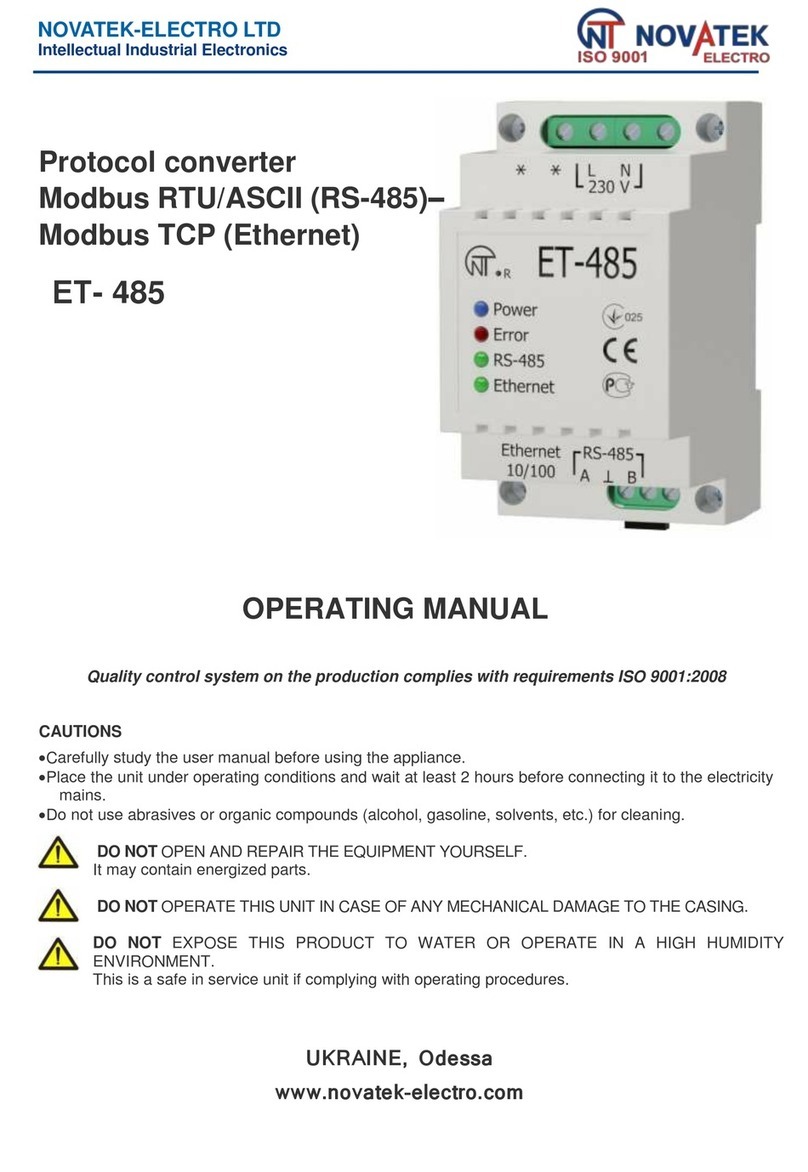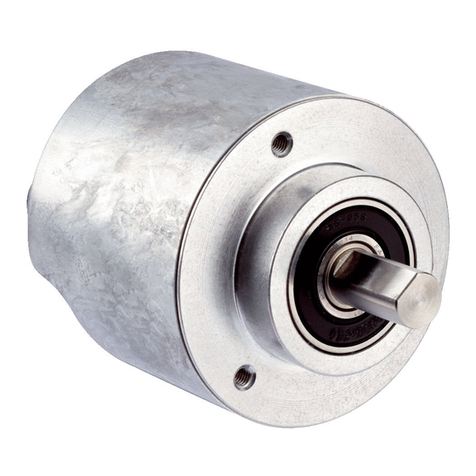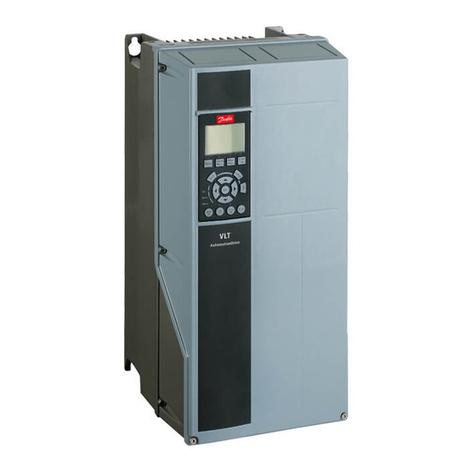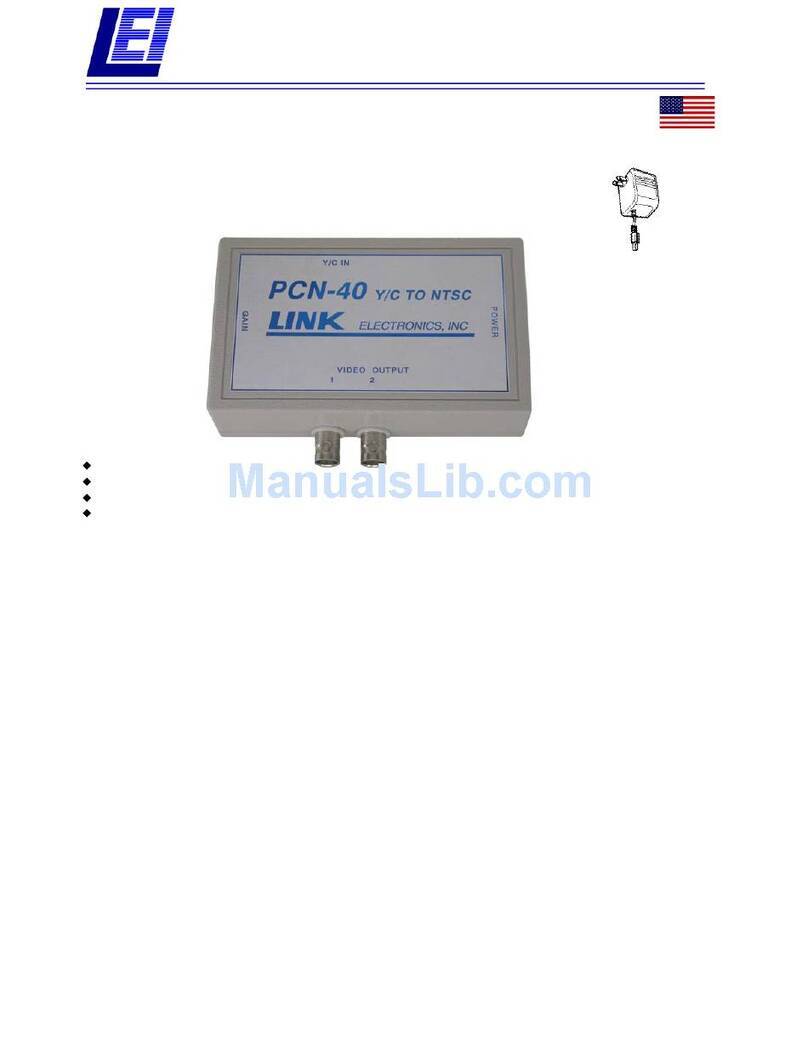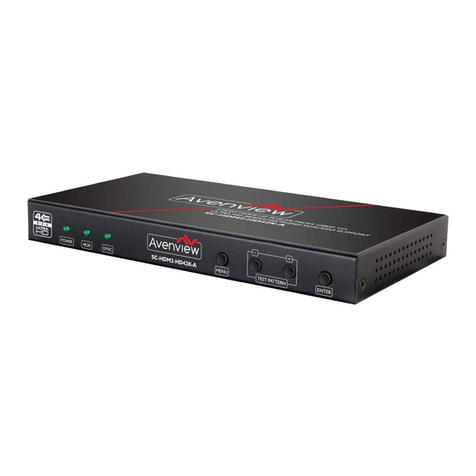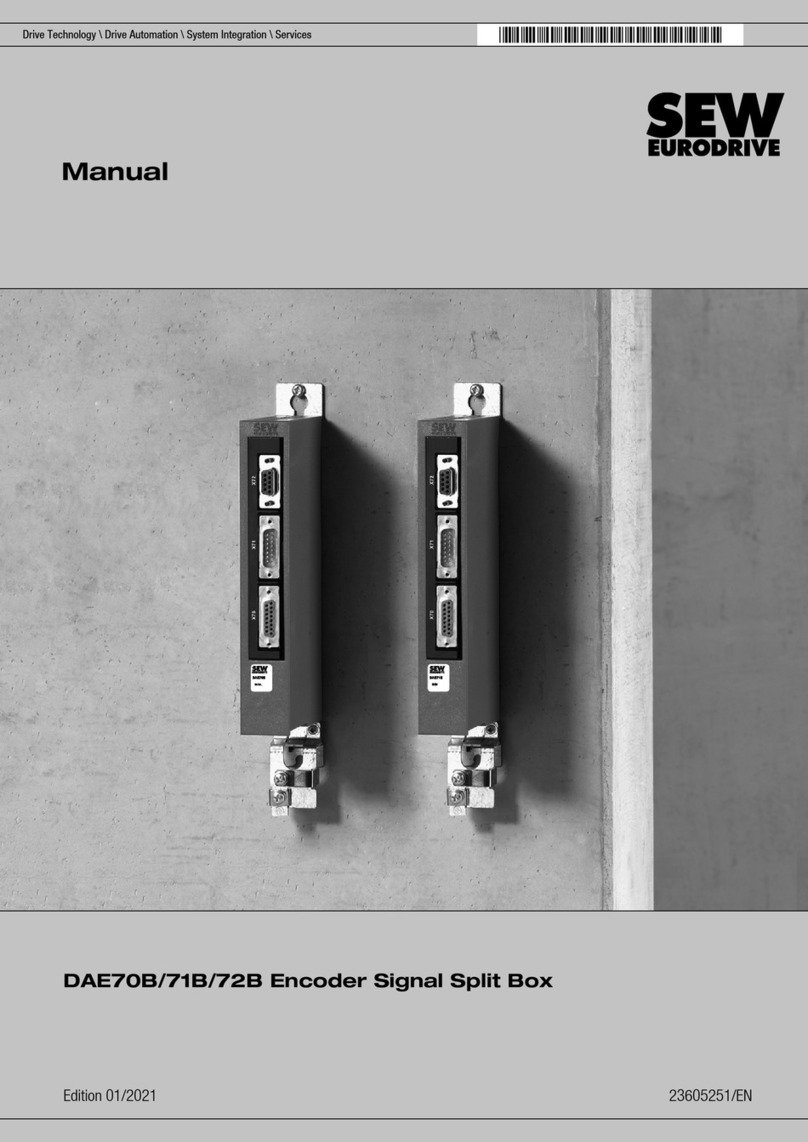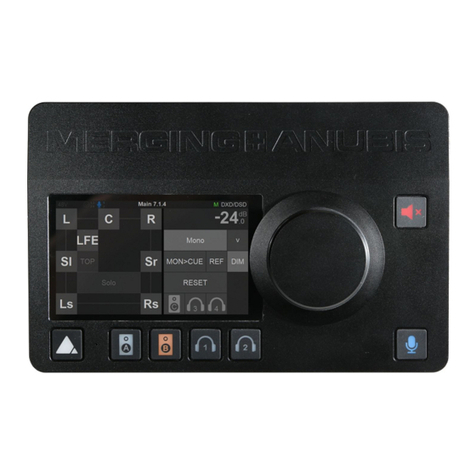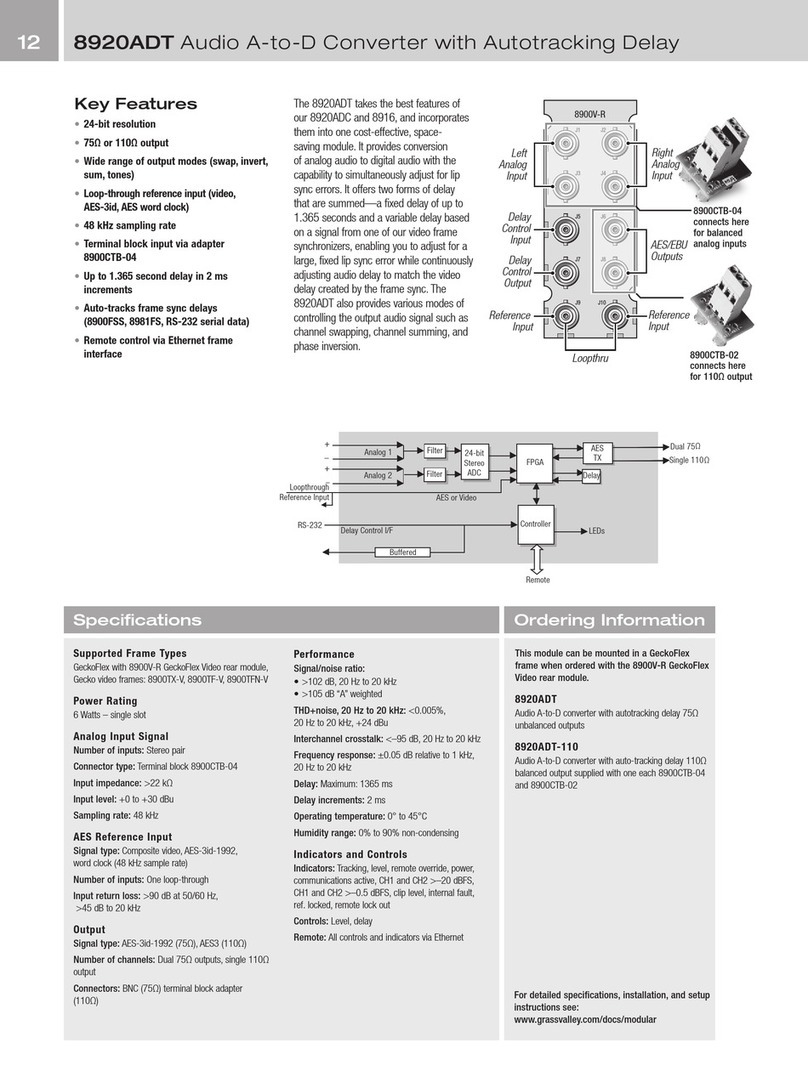Novatek-electro EM-486 User manual

«NOVATEK-ELECTRO» LTD
Intelligent Industrial Electronics
Protocol converter Modbus RS-485
via mobile communication
ЕM - 486
OPERATING MANUAL
Quality control system on the production complies with requirements ISO 9001:2008
Dear customer,
Company NOVATEK-ELECTRO LTD. thanks you for purchasing our products.
You will be able to use properly the product after carefully studying the Operating Manual.
www.novatek-electro.in

~ 2 ~
EM-486
NOVATEK-ELECTRO
CONTENT
1 PURPOSE
5
1.1 Purpose device
3
1.2 Overall and setting dimensions
5
1.3 Operating Conditions
5
2 COMPLETE SUPPLY SET OF EM-486
6
3 TECHNICAL SPECIFICATION
6
4 DESIGN
7
5 THE INTENDED USE
7
5.1 Preparation for operation
8
5.2 Use of the EM-486
5.3 Settings
10
12
6 MAINTENANCE
30
7 SERVICE LIFE AND WARRANTY
30
8 TRANSPORTATION AND STORAGE
30
Appendix А. Versions and modifications
31
Appendix B. Connection
32
Appendix C. Operation logic programming
35
Appendix D. Updating of firmware
43

~ 3 ~
NOVATEK-ELECTRO
EM-486
ATTENTION! ALL REQUIREMENTS OF THIS OPERATING MANUAL ARE COMPULSORY TO BE MET!
WARNING! –PRODUCT TERMINALS AND INTERNAL COMPONENTS ARE UNDER
POTENTIALLY LETHAL VOLTAGE
TO ENSURE THE PRODUCT SAFE OPERATION IT IS STRICTLY FORBIDDEN THE
FOLLOWING:
TO CARRY OUT MOUNTING WORKS AND MAINTENANCE WITHOUT DISCONNECTING THE
PRODUCT FROM THE MAINS;
TO OPEN AND REPAIR THE PRODUCT INDEPENDENTLY;
TO OPERATE THE PRODUCT WITH MECHANICAL DAMAGES OF THE CASE.
IT IS NOT ALLOWED WATER PENETRATION ON TERMINALS AND INTERNAL ELEMENTS OF THE
PRODUCT.
During operation and maintenance the regulatory document requirements must be met, namely:
Regulations for Operation of Consumer Electrical Installations;
Safety Rules for Operation of Consumer Electrical Installations;
Occupational Safety when in Operation of Electrical Installations;
Installation, adjustment and maintenance of the product must be performed by qualified personnel having
studied this Operating Manual.
In compliance with the requirements of this Operating Manual and regulations the product is safe for
use.

~ 4 ~
EM-486
NOVATEK-ELECTRO
This Operating Manual is intended to familiarize you with the unit, the requirements for safety, operation and
maintenance procedures of the Protocol converter RS-485 via mobile communication EM-486 (hereinafter referred
to as EM-486).
The product meets the requirements:
UBZ complies with the requirements of the following international standards:
–Low-voltage Switchgear and Control-gear; Part 1: General Rules (IEC 60947-1:2004);
–Low-voltage switchgear and control gear –Part 6-2: Multiple function equipment - Control and protective switching
devices (or equipment)( ІEC 60947-6-2:1992)
–Industrial, scientific and medical (ISM) radio-frequency equipment - Electromagnetic disturbance characteristics –
Limits and methods of measurement (CISPR 11:2004)
- Electromagnetic compatibility (EMC). Part 4-2: Testing and measurement techniques –Electrostatic discharge
immunity test (IEC 61000-4-2:2001)
Harmful substances in amounts exceeding maximum permissible concentrations are not available.
TERMS AND ABBREVIATIONS
10Base-T –Ethernet standard for twisted pair communication with the speed of 10Mbit/s;
100Base-T –Ethernet standard for twisted pair communication with the speed of 100Mbit/s;
8P8C/RJ45 –is an unified socket for 10Base-T / 100Base-T network connections;
Twisted pair –is a pair of insulated conductors inside the cable, which are twisted together in order to reduce
the distortion of the transmitted signal;
Indicator –is a LED element;
Display –OLED graphical indicator
Client –is a device, which is addressing the other devices(server) with a request to perform certain functions;
Package –is a block of data to be transmitted between devices;
Server –is a unit, which performs specific functions at the request of other units;
ASCII –is a table of standard codes for information interchange;
DHCP –It is the Protocol that allows network nodes automatically obtaining the parameters of TCP/IP (IP
address);
Ethernet –is a standard forpacket network communicationand transmitting data between units (e.g., PCs);
FTP –the FTP protocol of a file transfer according to the standard TCP/IP
GPRS –GPRS –technology of a packet transmission of data on mobile communication
GSM - the standard of digital mobile communication
HTTP –is a protocol for transferring Web-pages and other data over "client-server" technology;
Internet –is a global routing system of units for storing and transferring data;
IP (protocol) –is a routable protocol for transferring data over Ethernet. It is a part of TCP/IP and usedfor Internet;
IP (address) –is a node address, which is unique within a single network, operating over the IP protocol;
IPv4 –is a four byte IP-address;
MAC (address) –is an address, used for device authentication during Ethernet transmissions. It is usually
unique although qualified personnel can change it under certain circumstances.
MAC-48 –is a six byte MAC-address;
Modbus –is a standard and protocol for packet communication over the "client-server" technology for industrial
electronic units;
Modbus RTU –is a communication protocol of the unit for bite wise transfer of the package;
Modbus ASCII –is a communication protocol of the unit for the transfer of package in the form of ASCII-symbols;
Modbus TCP –is a protocol for transferring Modbus packages under the TCP/IP standard;
NTP –It is the Protocol for clock synchronization at the network nodes with variable delays of transmission;
RS-485/EIA-485 –is a network standard for communicating units over the twisted pair;
SMS –a standard and technology of transmitting the brief messages via mobile communication;
TCP/IP –is a standard and a set of protocols for transferring data along thenetworks with delivery verification;
WEB –is a system for accessing documents on the server, used in the Internet.
WEB-page –is a document, file, recourse, which is available on the Web-server;
WEB-browser –is aWEB-server client for accessing theWEB-pages, which is primarilyusing the HTTP protocol.

~ 5 ~
NOVATEK-ELECTRO
EM-486
1 PURPOSE
1.1 PURPOSE DEVICE
EM-486 provides for data collection from connected devices (analog transducers and MODBUS devices), data
transmission to the server, and access to data (via MODBUS TCP Protocol or via SMS text messages), tracking
events and response to the events (control of the relay, recording the values in MODBUS devices).
Protocol converter RS-485 via mobile communication EM-486 provides access to readings of gauges and registers
of Modbus connected via RS-485 interface MODBUS TCP with the help of text SMS messages, EM-486 has:
Flexible options of connection (via wire or wireless communication, automatic method selection of
communicating with a server, automatic or manual selection of GSM provider and communication parameters,
resetting of MAC-address and other Ethernet settings);
Protection of access (password for setting mode, filter of IP-address for setting or connection to
Modbus network, connection only to the selected server with automatic login, password for control via SMS);
Different modes of data interchange via RS-485 (RTU or ASCII, with checking of parity for even-odds or
without checking, wide range of transmitting rate, adjustable delay);
programming the collection of data, events, and action for events (see Appendix B);
Programmable outputs for reaction at events and alarms;
Programmable inputs for analog sensors;
Programmable impulse meters for every sensor;
Power output for sensors;
Reserve power supply input;
Service functions (real time clock, firmware updating option).
1.2 OVERALL AND SETTING DIMENSIONS
1.2.1 The unit drawing, together with the overall and setting dimensions, is provided in Figure 1.1.
Figure 1.1 –Overall dimensions of the unit
The front panel of ЕТ-486 is provided in Figure 1.2.
1.3 OPERATING CONDITIONS
EM-486 is designed for operation in the following conditions:
Ambient temperature: from minus 35 to +55°С;
Atmospheric pressure: from 84 to 106.7 kPa;
Relative air humidity (at temperature of +25°С) 30 … 80%.
ATTENTION! The unit is not intended for use:
- in conditions of significant vibration and shocks;
- in high humidity conditions;
- in corrosion environments with content in the air of acids, alkalis, etc., as well as severe contamination (grease,
oil, dust, etc.).
If the temperature of the unit after transportation or storage is different from the temperature of the environment
in which its operation is assumed, then before connecting to the mains keep the unit in operation conditions for two
hours (because on the unit elements condensation may be available).

~ 6 ~
EM-486
NOVATEK-ELECTRO
1 –Graphic display OLED is designed for indicating the state of the unit, connections, communication interface
loading and showing the alarm messages.
2 –Indicator «K1» is lit on when relay K1 is activated.
3 –Indicator «K2» is lit on when relay K2 is activated.
4 –Indicator «K3» is lit on when relay K3 is activated.
5 –Indicator «Memory SD» is lit on when there is a memory card in a special slot, is blinking while transmitting the
data to the SD-card.
6 –Indicator «Server» is lit on when there is a connection with a server for data accumulating, is blinking while data
exchange with a server.
7 –Indicator «RS-485» is lit on when waiting a respond from a device in Modbus network; is blinking while data
exchange via Modbus net work.
8 –Indicator «GSM» is blinking every 3 sec. when there is a connection via GSM network, is blinking 3 times per
second while data exchange via GPRS.
9 –Indicator «Ethernet» is lit on when there is a connection via Ethernet network; it is blinking while data exchange
via network.
10 –Reset button «R» (is located under the casing and is available for pressing with a help of thin object such as a
paper clip) is designed to restart the unit or make factory reset.
11 –Alarm indicator «Alarm» warns about an error registration by the analysis of received data.
12 -LED Indicator «Power» is lit on when power voltage present.
Figure 1.2 –Front panel of EM-486
2 COMPLETE SUPPLY SET OF EM-486
EM-486 is supplied with table 2.1:
Table 2.1- Complete set of EM-486
Item
Quantity
EM-486
1 pc.
Cable for Ethernet connection
1 pc.
GSM antenna (SMA M connector, 50 Оhm)*
1 pc.
Operating manual
1 pc.
MicroSD card (2 Gb)
1 pc.
Shipping box
1 pc.
* other types of antennas are delivered in coordination with the buyer
3 TECHNICAL SPECIFICATIONS
Main technical specifications are resulted in Table 3.1.
Table 3.1–Main technical specifications of the unit
Operating supply voltage, VAC
230
Supply line frequency, Hz
45 –65
Data Exchange Interface over the Ethernet network
10Base-T / 100Base-T
Supported Ethernet protocols
UDP, ARP, TCP
Data Exchange Interface over wireless network
GSM
Supported standards of wireless network
SMS, GPRS
Integrated servers
Modbus TCP, HTTP
Maximum number of connections over the Modbus TCP protocol
4
Data Exchange Interface over the Modbus network
RS-485
Supported protocols of Modbus network
Modbus RTU, Modbus ASCII
Maximal output voltage of driver RS-485, V
3.3
Short circuit output voltage of driver RS-485 (maximal), mA
250
Resistance of inbuilt terminator, Ohm
70–1 000 Ohm or deactivated

~ 7 ~
NOVATEK-ELECTRO
EM-486
The recommended number of connected devices in Modbus network
- at input voltage of receivers on bus RS-485 not more than 0,125 mA
- at input voltage of receivers on bus RS-485 not more than 1 mA
Not more, 256
Not more, 32
Readiness time at power switching on, sec, not more than
15*
Precision measurements of voltage, mV, not more than
40
Precision measurements of current, A, not more than
200
Precision measurements of temperature, °C, not more than
2
Rated voltage direct current back supply , V
12
Voltage supply, at which operability is maintained:
- alternative current, V
- direct current, V
90 –265
127 –375
Back supply voltage at which operability is maintained, V
9 –16
Power consumption (under pressure), W ,not more than
12
The maximum switched current of output pins, A
16
Universal inputs
4
Types of the connected gauges
- gauge with voltage output to 10 V
- gauge with current output to 20 mA
- ‘dry contact’
- NTC temperature gauge
The maximum voltage on the universal input, V
12
The maximum current through the universal input, mА
24
The voltage of sensors power output, V
12
The maximum current of sensors power output, А
0.1
Programmable relay outputs with switching contacts, pcs.
3
Commutation service life of output contacts:
- electrical service life under load 16 A(cos φ = 1,0), times, not less
- mechanical service life, times, not less
50 000
10 000 000
Unit purpose
Communication equipment
Nominal operation condition
continuous
The protection level
IP20
Climatic version
NC3.1
Permissible pollution density
II
Overvoltage category
II
Protection class against electrical shock
II
Rated insulation voltage, V
450
Rated impulse withstand voltage, kV
2.5
Cross section of wires of connection terminals, mm²
0.5-3
Maximal tightening torque of terminals external screws, N*m
0.4
Weight, kg, not more than
0.750
Overall dimensions, H*B*L, mm
- with installed antenna
- without antenna
157 х 112 х 56
157 x 99 x 56
Standard 35 mm DIN rail mounting
Operating position
arbitrary
Housing material - self-extinguishing plastic
Notes:
* Connections on the Ethernet networks/Internet can take more time.
4 DESIGN
EM-486 provides control for MODBUS devices in RS-485 network via Ethernet interfaces or GPRS, or via the
SMS. The unit also allows to read data from devices by MODBUS or from connected sensors.
The processor supports connection to the accumulating data cloud server via Ethernet network with a help of
micro chip of physical interface of Ethernet (or via GPRS with a help of inbuilt GSM-modem, if connection via
Ethernet is not available).
In addition, EM-486 can be connected to Ethernet via MODBUS TCP Protocol to exchange data with MODBUS
devices, or with the product. The controller receives and processes SMS with a password and command read/write for
Modbus devices.
When inserting a memory card the product reads the internal memory for operational logic –program for data
collection and tracking of events. The program runs in the background mode.
Product stores in the internal memory the network settings, parameters of inputs and outputs, the logic of action,
the collected data log.

~ 8 ~
EM-486
NOVATEK-ELECTRO
5 THE INTENDED USE
5.1 PREPARATION FOR OPERATION
5.1.1 Preparation for connection:
–Unpack the unit (we recommend to keep the original packing for the entire warrantyperiod of the unit operation);
–Check the unit for damage after transportation; in case of such damages detection, contact the supplier or
manufacturer;
–Carefully study the Operating Manual (pay special attention to the connection diagram to power the unit);
–If you have any questions regarding the installation of the unit, please contact the manufacturer by telephone
number indicated at the end of this Operating Manual.
5.1.2 General instructions
ATTENTION! THE UNIT IS NOT DESIGNED FOR LOAD COMMUTATION IN CASE OF SHORT CIRCUITS.
THEREFORE THEY SHOULD BE PROTECTED BY AUTOMATIC CIRCUIT BREAKERS (FUSES) WITH
TRIPPING CURRENT NOT EXCEEDING 16 A.
ATTENTION! ALL CONNECTIONS MUST BE PERFORMED WHEN THE UNIT IS DE-ENERGIZED.
Error when performing the installation works may damage the unit and connected devices.
To ensure the reliability of electrical connections you should use flexible (stranded) wires with insulation for
voltage of not less than 450 V, the ends of which it is necessary to be striped of insulation for 5±0.5 mm and
tightened with bootlaces. Recommended cable cross section for connection is not less 1 mm2.
EM-486 connection to RS-485 bus is made by cable of twisted pair type Cat.1 or higher category. It is recommended
to use the shielded cable, in this case it should be grounded (in accordance with «ANSI/TIA/EIA-485-A-1998»
recommendations).
In case of connection to Ethernet it is necessary to use a cable in a set, or the "twisted pair cable" cable of the
Cat.5e category with the 8P8C (RJ-45) tip. Wires fastening should exclude mechanical damage, twisting and
insulation abrasion of wires.
IT IS NOT ALLOWED TO LEAVE EXPOSED PORTIONS OF WIRE PROTRUDING BEYOND THE
REMOVABLE TERMINAL BLOCK.
F1 –fuse (fuse element), for
current of 0,25 А;
F2 –fuse (fuse element), for
current of 2,5 А;
F3 –fuse (fuse element), for
current of 0,25 А;
Contact “A” is designed for
transferring non-inverted signal,
Contact “B” is used for the
inverted signal.
Figure 5.1 –The Unit connection diagram
For reliable contact it is necessary to perform tightening of screws of removable terminal block with the force
specified in Table 3.1.

~ 9 ~
NOVATEK-ELECTRO
EM-486
When reducing the tightening torque, the junction point is heated, terminal block maybe melted and wire cane burn. If
you increase the tightening torque, it is possible to have thread failure of terminal block screws or the compression of the
connected wires.
To improve operational properties of the unit it is recommended to install the F1-F3 fuse (fuse element),
or the equivalent in power supply circuit for EM-486 (see Fig 5.1).
5.1.3 EM-486 switching on
5.1.3.1 The unit is switched according to the diagram, see Fig 5.1.
5.1.3.2 Switch the cable connection with Modbus network (twisted pair cable of Cat.1 or higher) to the
"RS-485" socket and Modbus network (or directly to the unit with RS-485 interface).
If EM-486 is connected to the middle of bus RS-485, or if the bus has external terminals at the ends –set the
over switches «RS-485 Term.», located next to slot «RS-485», in position OFF.
If EM-486 is connected at one of the ends of bus RS-485, without a terminal, –set the over switches «RS-485
Term», located next to the slot «RS-485», in accordance with wave resistance of bus cable, using the Table 5.1.
5.1.3.3 If EM-486 should be connected to Internet via wire line, to local network or directly to PC –connect the
Ethernet communication cable to the slot «Ethernet» and to Ethernet network. The details of connection depending
on the type of wire line are resulted in Appendix А.
5.1.3.4 In case of sensors connection to Unit universal inputs «IN». The ways of connection of different types are
provided in figure 5.2.
5.1.3.5 In case of controlled elements connection to the outputs of programmable relays of the unit «K».
Table 5.1 –Resistance of integrated terminator of bus RS-485
№
Resistance of
terminator, Ohm
Position of switches
«RS-485 Term.»
№
Resistance of
terminator, Ohm
Position of switches
«RS-485 Term.»
1
Terminator is
deactivated
ON
▄ ▄ ▄ ▄ ▄
12345
13
132
ON
▀ ▄ ▄ ▀ ▄
12345
2
1 000
ON
▄ ▄ ▄ ▄ ▀
12345
14
120*
ON
▀ ▀ ▄ ▄ ▄
12345
3
390
ON
▄ ▄ ▄ ▀ ▄
12345
15
118
ON
▄ ▀ ▀ ▀ ▄
12345
4
300
ON
▄ ▀ ▄ ▄ ▄
12345
16
117
ON
▀ ▄ ▄ ▀ ▀
12345
5
280
ON
▄ ▄ ▄ ▀ ▀
12345
17
107
ON
▀ ▀ ▄ ▄ ▀
12345
6
230
ON
▄ ▀ ▄ ▄ ▀
12345
18
106
ON
▄ ▀ ▀ ▀ ▀
12345
7
200
ON
▀ ▄ ▄ ▄ ▄
12345
19
99
ON
▀ ▄ ▀ ▀ ▄
12345
8
195
ON
▄ ▄ ▀ ▀ ▄
12345
20
92
ON
▀ ▀ ▀ ▄ ▄
12345
9
170
ON
▄ ▀ ▀ ▄ ▄
12345
21
90
ON
▀ ▄ ▀ ▀ ▀
12345
10
167
ON
▀ ▄ ▄ ▄ ▀
12345
22
84
ON
▀ ▀ ▀ ▄ ▀
12345
11
163
ON
▄ ▄ ▀ ▀ ▀
12345
23
74
ON
▀ ▀ ▀ ▀ ▄
12345
12
145
ON
▄ ▀ ▄ ▀ ▀
12345
24
69
ON
▀ ▀ ▀ ▀ ▀
12345
* –is recommended for cable Cat. 3

~ 10 ~
EM-486
NOVATEK-ELECTRO
5.1.3.6 To connect a power supply to the socket "230 V". If necessary, to connect a source of back supply to the
power connector "12 V".
5.1.3.7 If EM-486 should be connected to Internet via wireless connection –insert SIM-card of mobile
communication operator in SIM slot; connect the antenna to the slot ANT (terminal SMA F).
5.1.3.8. If EM-486 should perform autonomous data collection and tracking of events, put the memory card with
the prepared program for logic of actions (see Appendix B) in SD slot.
Figure 5.2 –Sensors connection diagram
5.2 USE OF THE EM-486
5.2.1 General information
After power supply is provided to the unit, all indicators light up, except for «Ethernet» and «GSM», and the unit
performs the initialization. After this for 2 seconds the indicators, except for indicator of power, light down, and the
unit proceeds to start the interface of networks connection. At that the display shows general information about the
unit, as resulted in figure 5.3. The start up can take up to 15 seconds, depending on the settings and quality of
connection.
Figure 5.3 –Showing the general information about the unit on the display
After wards the unit proceeds with performing the user set program of inquiry for sensors and Modbus devices.
NOTE! CONTINUOUSLY LIT UP OR BLINKING INDICATOR ALARM AFTER SWITCHING THE EM-486,
INDICATES THE UNIT FAILURE.
The unit provides and supports the connection to Ethernet/GSM networks.
EM-486
© 2017 Novatek-Electro
FW version 24

~ 11 ~
NOVATEK-ELECTRO
EM-486
When the indicator ETHERNET is lights up means that connection to a network is executed successfully. The
blinking indicator ETHERNET means data transmitting in the network.
If the indicator GSM is blinking one time every three seconds that means the connection to the GSM network is
successfully made. If "GSM" LED blinks three times per second, it means enabling the data transmission via GPRS.
The display shows the loading of input/output interfaces and a level of GSM signal as shown in figure 5.4.
(«E: 5.2к» - rate of transmitting via Ethernet 5,2 kB/sec, «G: 7-0.3к» - the level of GSM signal is 70%, rate of
transmitting via GSM GPRS is 0,3 kB/sec, «S: 15%» - Loading of RS-485 is 15%)
Figure 5.4–Showing the state of connections on the display
5.2.2 Modes of Operation
5.2.2.1 Connection to Server
EM-486 provides and supports connection to the server specified in the unit settings. The light up indicator
Server means that the connection to server was successfully made. The blinking indicator Server means that there
is a data exchange with the server. The data interchange with server is mane via one of two protocols: modified
Modbus TCP and Modbus TCP.
5.2.2.2 Monitoring of sensors and devices which are connected via RS-485
Controllerinquires the registers of Modbus devices, which are connected via RS-485 on requests from the server.
EM-486 measures the reading of connected sensors. The taken readings can be resulted in appropriate scale
(according the type of sensor and the settings of the unit). The resulted values are shown on the display in the
appropriate view as shown in the figure 5.5.
Figure 5.5 –Showing the state of inputs on the display
(sensors 1 and 2 are disconnected, a sensor of temperature 3 –25°C, a sensor of current 4 –0,02 А)
In requests of the server can be specified Modbus registers of the EM-486 unit, for saving the readings of
sensors, relay states, etc.
5.2.2.3 Access to Modbus network via Modbus TCP interface
EM-486 performs the function of Modbus gateway and waits for network connection via Modbus TCP protocol to
port 502. The Modbus TCP connection port can be changed by the user. Connection to PC can be made by any
programs –Modbus TCP clients. The client version for Windows software is available for download on the
manufacturer’s web-site (http://novatek-electro.com/en/software.html).
At inquiry for client connection to Modbus TCP port, the unit checks a list of available connections. If all
connections are already engaged, the connection is cancelled otherwise the unit adds it into its internal list of
service clients (not more than specified number of clients).
At connection with a client the unit waits for Modbus-inquiry from the client. After receiving the inquiry from the
client, the unit analyses the inquiry and, depending on code of inquired function and actual rights of the client,
processes and blocks it. At blocking the inquiry EM-486 can generate and send to the client the specified by the
user code of MODBUS exception (by default –code 1). The client’s authority level are defied by the entered
passwords.
If the inquiry is address to EM-486, the unit does not re-direct it, but processes it and send the reply to the client.
The inquiries to the other devices are re-directed in Modbus network, and the reply is waited from the device in
MODBUS network –at that event the indicator RS-485 lights on. If the data is received or if the time is out the
indicator RS-485 lights down.
If there is no reply, EM-486 can generate and send to the client the specified by the user code of Modbus
exception (by default –code 11).
If there is a reply received on inquiry, EM-486 sends it to the client who had sent this inquiry.
5.2.2.4 Access to Modbus network via SMS
If there is GSM-connection established, EM-486 receives incoming SMS. All incoming SMS begin with a
password. If the password does not match the one specified in settings, SMS is not operated and the reply SMS is
not being sent back.
After password through a gap is followed command.
E: 5.2к S: 15%
1: - - - 3: 25C
2: - - - 4: 0,02 А
G: 7-0.3к S: 15%

~ 12 ~
EM-486
NOVATEK-ELECTRO
The command consists of an access symbol: (“R” for reading, “W” for writing), an address (identification) of the
device in Modbus network, a symbol of resource (“H” for most often used Modbus registers for values saving,
thereat the functions of Modbus №3 will be used for reading or №6 for writing or “I” thereat the functions of Modbus
№1 will be used for reading) and addresses of resource (register). For the writing function additionally after the
space there is the value for locating by address. For example:
SMS message «abc r1h100» will cause sending the requiry for reading the register 100 of device 1 (in case
when the password for reading via SMS is specified as “abc” in the settings);
SMS message «stanc12 w2h174 5000» is for writing the value 5000 in register 174 of device 2 (in case when
the password for writing via SMS is specified as “stanc12” in the settings).
It the command format is correct , the controller forms the Modbus inquiry.
In the inquiry is addressed to EM-486, the device does not redirect the inquiry but processes it and sends the
reply to the client. Inquiries for other devices are redirected in Modbus network and there is waiting for the reply
from a device in Modbus net work –thereat the indicator RS-485 lights up. If the data is received of the time is out,
the indicator RS-485 lights down.
If the correct reply is received on inquiry, EM-486 forms the reply SMS. Every SMS begins with a command prior
received from the user. After the command and space there should be the value of register specified in the
command (both at reading and writing). The presence of register value in SMS is as confirmation of successful
fulfillment of command. For example, SMS «r1h100 2200» means that the value 2200 of register 100 by command
for reading from the device 1 has been read.
If as a reply on inquiry there is a Modbus exception code, EM-486 forms SMS with a reply about exception. SMS
begins with a command previously received from the user. After command and space there should be a
warning about exception. The warning consists of a line «EXC.» and a number of exception. After the warning and
space there can be the text description of exception with this number (the standard Modbus exceptions are resulted
in the table 5.2). For example, the message «r3h873 EXC.2 ILLEGAL DATA ADDRESS» means that for the device
3, a register with address 873 is not executable for reading (or is not available).
When there is no reply via RS-485, EM-486 can generate a specified by user exception code and send it in SMS
(by default –code 11).
Table 5.2 –The standard Modbus exception codes
Code
Exception
Description
1
Illegal function
The received code can not be processed
2
Illegal data address
The data address specified in the inquiry is not available
3
Illegal data value
The value in the inquiry is not acceptable
4
Device failure
Non-recoverable failure happened when addressee tried to execute the inquired
action
5
Acknowledge
The addressee has received the inquiry and is processing it but this action takes a
lot of time.
6
Device busy
The addressee is processing the command. The client can resend the message later.
8
Memory parity error
The parity error was detected when addressee was trying to read the extended
memory
10
Gateway paths not
available
The gateway can not redirect the inquiry because there is no path (connection) to
the addressee
11
Target device failed to
response to gateway
The gateway has not received a reply on redirected inquiry because the
addressee had not replied on time
5.2.2.5. Data collection and event tracking
When the operational logic program is loaded into the internal memory, the product with the specified interval,
reads the specified registers (of connected devices or EM-486), and then performs the specified transformations
and the evaluation of the received data. The results can be: sending SMS, turning on/off of the relay, the entry in
the specified register (of connected device or EM-486). The program downloading to the internal memory is
performed from the memory card. The procedure for preparing and loading the program into the product is
described in Appendix C.
5.3 SETTINGS
5.3.1 General information
The connection settings of EM-486 is made via HTTP protocol or via Modbus TCP protocol and serves for
specifying the main parameters needed for the unit operation: types of connected sensors, exchange parameters
via RS-485, parameters of address in Ethernet network (if Ethernet is used) and server address to which EM-486 is
connected automatically.
The adjustable parameters are described in items 5.3.2.The parameters remain saved after the power cut off.
The unit setting can be made by two methods:
Via WEB-interface, as provided in item 5.3.3;
Via Modbus-interface as descibed in item 5.3.4.

~ 13 ~
NOVATEK-ELECTRO
EM-486
NOTE! WHEN CHANGING THE UNIT PARAMETERS THERE CAN BE SPECIFIED THE VALUES HINDERING
OR PREVENTING THE CONNECTION OF UNIT IN THE NETWORKS.
Safely remove of the memory card restarting unit or reset of settings to factory values is executed by means of
the Rbutton available through a hole on a front panel. The button is pressed by a thin subject.
The reset of the unit to factory settings:
press and hold the reset button Rfor not less than 8 seconds; after 2 seconds of holding the indicator Alarm
will light on; after 8 seconds of holding the unit will restart, the indicators will blink one time;
then release the button R;
To restart the unit with saving of the user’s settings:
press and hold the reset button R during time from 2 to 8 seconds;
when the indicator Alarm lights on, release the button R.
To display information about connections or safely remove of the memory card:
press and release the reset button "R", the display shows information about connections, the indicator
"Memory SD" will go out. Remove the memory card.
5.3.2 Parameters of EM-486
The sets of parameters available via MODBUS protocol are provided in table 5.3. The internal structure of all
sets of parameters is similar to the structure of a set provided in Table 5.8, for exception of the initial address.
The format of parameters presentation in MODBUS registers is described in table 5.4.
Parameters describing the unit are resulted in table 5.5.
The parameters of unit current mode are available for reading and writing and are provided in table 5.6.
The parameters describing the Unit state are available only for reading and are described in table 5.7.
The setting parameters are available only in the setting mode and are listed in table 5.8.
Table 5.3 –The sets of parameters available via Modbus protocol
Set
Description
Access
Address
Changeable
settings
The parameters listed in Table 5.8 that can be changed
and activated as described in Item 5.3.3 and 5.3.4
Only in mode of setting,
Reading or writing
300 –799
Active settings
The settings being used by the device at the moment
In any mode, Only reading
2300 –2799
Saved settings
The set is saved regardless the power of the unit and is
used at starting of the unit
Only in mode of setting,
Only reading
3300 –3799
Table 5.4 –Format of parameters presintation in Modbus registers
Parameter
Range of values
Description
Number of occu-
pied registers
Number
0–65535
Whole number (16 bit) in standard range of Modbus
register values
1
Number
-32768 –+32767
Whole number (16 bit) in additional arithmetic
1
Number
0–4294967295 in two regis-
ters, upper part –the first one
Whole number, which value can exceed the limit for
Modbus register (65535)
2
Line of
symbols
In each register, a number
from 0 to 255 –ASCII-code of
symbol or 0 (the end of line)
A set of values every of whichisequal to symbol code
1 in ASCII encoding. If the line is shorter than the
maximal length then after the last symbol there should
be code 0
Max. length of
line for the
parameter
IP-address
(IP-mask)
In every register –one byte
(0–255)
Set of four bytes of address IPv4, from left to right
4
MAC-
address
In every register –one byte
(0–255)
Set of six bytes of address MAC-48, from left to
right
6
Table 5.5 –Unit describing parameters
Parameter
Description
Address
Type of unit
The code defining the instrument Modbus at the manufacturer (15 –EM-486)
0
Program version
Program version of firmware of the unit
1
Control code
CRC32 of the unit program firmware
2–3
Table 5.6 –Parameters of unit current mode
Parameter
Range of
values
Initial
volume
Description
Address
Password enter
Line of
symbols
0
At entering the actual password the client receives the
appropriate access (see the registers 710-749)
At entering the empty line the rights of client are reset to level
at the moment of connection
100–119

~ 14 ~
EM-486
NOVATEK-ELECTRO
Parameter
Range of
values
Initial
volume
Description
Address
Command of
control
0–55,
Writing in
mode of
setting
0
0: no activity
1: «Restart» – Restart of the unit
2: «Save» – save the changes of settings via Modbus
3:«Apply» – apply the settings without restart (It is only available
for MODBUS, relays, transducers and user parameters);
4: "Save and apply" –similarly to commands 2 and 3;
444: «Back to Factory Settings» – reset the settings to the
factory settings
9: “Cancel" – to read the saved settings;
21: «Deactivate relay K1» – switch the relay K1 in normal state
until the next command on relay or until reset of the unit
22: «Deactivate relay K2» – switch the relay K2 in normal state
until the next command on relay or until reset of the unit
23: «Deactivate relay K3» – switch the relay K3 in normal state
until the next command on relay or until reset of the unit
29: «Deactivate all relays» – switch all relays in normal state
until the next command on relays or until reset of the unit
31: «Activate relay K1» – switch relay K1 in active state until
the next command on relay or until reset of the unit
32: «Activate relay K2» – switch relay K2 in active state until
the next command on relay or until reset of the unit
33: «Activate relay K3» – switch relay K3 in active state until
the next command on relay or until reset of the unit
39: «Activate all relays» – switch all relays in active state until
the next command on relay or until reset of the unit
41: «Control of relay K1» – switch relay K1 to automatic control
(normal state before the events which are programmed for
switching this relay) until the next command on relay or until reset
of the unit
42: «Control of relay K2» – switch relay K2 to automatic control
(normal state before the events which are programmed for
switching this relay) until the next command on relay or until
reset of the unit
43: «Control of relay K3» – switch relay K3 to automatic control
(normal state before the events which are programmed for
switching this relay) until the next command on relay or until
reset of the unit
49: «Control of all relays» – switch all relays to automatic control
(normal state before the events which are programmed for
switching these relays) until the next command on relay or until
reset of the unit
51: "Apply for Modbus" –apply the settings via Modbus and RS-
485;
54: “Apply for input” - apply the settings at inputs sensors;
55: “Apply for output” - apply the settings at the output of
loading relays.
59: "Apply for user" –apply the settings for the user area of
registers;
61: "Reset saved pulse counter at input 1" –before sending
this command, you should open the access to change the
saved counters (see command 13785);
62: "Reset saved pulse counter at input 2" –(see command
13785);
63: "Reset saved pulse counter at input 3" –(see command
13785);
64: "Reset saved pulse counter at input 1" –(see command
13785);
13785: "Start changing the stored pulse counters" –it should
be sent every time before usage of commands 61–64;
35381: "Start setting the clock" –it allows access to the
registers of clock setting;
35431: "Cancel setting the clock" –it closes the access to the
registers of the clock setting without changing hours;
120

~ 15 ~
NOVATEK-ELECTRO
EM-486
Parameter
Range of
values
Initial
volume
Description
Address
40959: "Clear the internal memory of the tasks" –to erase the
program for logic of actions (when the memory card is inserted,
it will automatically read again).
Table 5.7 –Parameters of unit current state
Parameter
Decription
Address
Mode
(see details for reg. 122)
0: User’s mode
1: Mode of setting
121
Tabs of access
Bit 0
0: The connected client can not get the access (via
password) on inquiry for device reading function via
RS-485
1: The connected client can get the access on
inquiry for reading function of the devices
connected to RS-485
122
Bit 1
0: The connected client has no access on inquiry for
reading function of devices connected to RS-485
1: The connected client has an access on inquiry
for reading function of the devices connected to
RS-485
Bit 2
0: The connected client can not get an access on
inquiry for functions of writing and control of
devices via RS-485
1: The connected client can get an access on
inquiry for functions of writing and control of
devices via RS-485
Bit 3
0: The connected client has no access on inquiry for
functions of writing and control of devices connected
via RS-485
1: The connected client has an access on inquiry
for functions of writing and control of devices
connected via RS-485
Bit 4
0: The connected client can not get an access to
registers EM-486, except for registers of version,
password, mode and tabs of access
1: The connected client can get an access to
registers EM-486, except for registers of version,
password, mode and tabs of access
Bit 5
0: The connected client has no access to registers
EM-486, except for registers of version, password,
mode and tabs of access
1: The connected client has an access to registers
EM-486, except for registers of version, password,
mode and tabs of access
Bit 6
Always 1
Bit 7
0: the connected client has no access for EM-486
setting
1: the connected client has an access for EM-486
setting (similar to to reg. 121)
Bit 8
Always 0
Bit 9
1: client has an authority for connection
(always is read as «1» after connection)
Bit 12
0 –the connected client does not have permission to
set the clock;
1 –the connected client have permission to set the
clock.
Time, min
Number of minutes since the moment of start-up
123–124
Number of Modbus TCP clients
Number of occupied connections of Modbus TCP
125
Limit of Modbus TCP clients
Total number of possible connections via Modbus TCP
126
Load of RS-485, inquiries/sec
Number of inquires sent via RS-485 per second
127

~ 16 ~
EM-486
NOVATEK-ELECTRO
Parameter
Decription
Address
Working load of RS-485,
inquiries/sec
Number of replies without errors via RS-485 per second
128
Load of RS-485 per second, %
Loading of RS-485 for the last second, with taking into
account set rate of RS-485 and time of inactivity
129
Load of RS-485 per minute, %
Loading of RS-485 for the last minute
130
Load of RS-485 per 5 minutes, %
Loading of RS-485 for the last five minutes
131
Load of Modbus TCP,
inquiries/sec
Number of inquiries received from the clients via Modbus
TCP per second
132
Useful load of Modbus TCP,
Inquiries/sec
Number of replies without errors being sent to the clients
via Modbus TCP per second
133
Load of GSM, kB/sec
Loading of GPRS channel with GSM being switched on
134
Load of Ethernet, ·100 kB/sec
Loading of wire channel with Ethernet being switched on
135
Max. clients of Modbus TCP
Maximal number of simultaneously connected clients via
Modbus TCP –from the moment of start up
136
Max. load of Modbus TCP,
inquiries/sec
Maximal number of inquiries received per second from the
clients via Modbus TCP –from the moment of start up
137
Max. load of RS-485, %
Maximal loading of RS-485 for 5 minutes –from the
moment of start up
138
Max. load of GSM, kB/sec
Maximal loading of GPRS –from the moment of start up
139
Current IP-address of Ethernet
IP-address, by which the device is available in Ethernet
network*
140–143
Current MAC-address of Ethernet
MAC-address, by which the device is detected in Ethernet
network
144–149
State of universal input 1
The readings of gauge connected to input 1, depending on
the type of gauge (see register 580):
-For the gauges with analogue output –the value of gauge
output in mV or in A (depending on the type of gauge);
-For discrete breakers –0 at open contacts, 1 at closed
contacts;
-For temperature gauges –the measured value of
temperature, 32767 –at gauge cut off, -32768 –at gauge
short circuit
150
The effective value of input 1 state
The gauge readings at the input 1 given as to the user scale,
inaccordance to the settings(see registers 766–767).
151
State of universal input 2
The readings of the gauge connected to input 2
152
The effective value of input 2 state
The gauge readings at the input 2 given as to the user
scale, in accordance to the settings
153
State of universal input 3
The readings of the gauge connected to input 3
154
The effective value of input 3 state
The gauge readings at the input 3 given as to the user
scale, in accordance to the settings
155
State of universal input 4
The readings of the gauge connected to input 4
156
The effective value of input 4 state
The gauge readings at the input 4 given as to the user
scale, in accordance to the settings
157
Not used parameter
The parameter is reserved for parity and is equal 0
158–159
State of relay output 1
0 –relay off, 1 –relay on
160
State of relay output 2
0 –relay off, 1 –relay on
161
State of relay output 3
0 –relay off, 1 –relay on
162
Not used parameter
The parameter is reserved for parity and is equal 0
163–164
Time before connection to remote
server
0: there is a connection to server of data accumulation
1: The connection is being made to the server of data
accumulation
2 –65534: number of secondsbefore the repeated connection
65535: connection to server is not used
165
Number of planned restarts
Number of restarts in accordance to the user setting –for
total operational time of the device
166
Number of critical errors
Number of noted errors (failures) causing the restart of
the device –for total operational time of the device
167
Operation time of device, min
Number of minutes of device operation –for total
operational time of the device
168–169
Current time
Number of seconds since 1st of January of specified
year (see reg. 172)
170–171

~ 17 ~
NOVATEK-ELECTRO
EM-486
Parameter
Decription
Address
Year of time count
Year, since 1st of January which is taken for time count
172
Time zone, min
Time zone, for the time count, number of minutes with
sign as to UTC+00
173
Temperature, °C
Device internal temperature
174
Power voltage, mV
Bus voltage 12 V (voltage at the output of the internal power
source or at inlet of backup power, depending on which the
voltage is higher).
175
Time before connection to remote
server Modbus TCP
0: there is a connection to remote server
1: the connection is being made to remote server
2 –65534: number of seconds before the repeated connection
65535: connection to server is not used
176
Interface connection to remote
server Modbus TCP
0 –there is a don’t connection;
1 –there is a connection by Ethernet;
2 –there is a connection to GPRS.
177
Not used parameter
The parameter is reserved for parity and is equal 0
178–179
IP-address of client 1**
IP-address of client, 0.0.0.0 –not connected
180–183
Port of client 1**
Port of client, 0 –not connected
184
IP-address of client 2**
IP-address of client, 0.0.0.0 –not connected
185–188
Port of client 2**
Port of client, 0 –not connected
189
IP-address of client 3**
IP- address of client, 0.0.0.0 –not connected
190–193
Port of client 3**
Port of client, 0 –not connected
194
IP-address of client 4**
IP- address of client, 0.0.0.0 –not connected
195–198
Port of client 4**
Port of client, 0 –not connected
199
Pulse counter at input 1
Number of pulses at input 1 after starting
200 –201
Pulse counter at input 2
Number of pulses at input 2 after starting
202 –203
Pulse counter at input 3
Number of pulses at input 3 after starting
204 –205
Pulse counter at input 4
Number of pulses at input 4 after starting
206 –207
Unused parameter
Parameter is reserved for compatibility and is equal to 0.
208 –209
Year (current time)
Current year
210
Month (current time)
Current month
211
Day of the month (current time)
Current day of the month
212
Hour (current time)
Current hour
213
Minute (current time)
Current minute
214
Second (current time)
Current second
215
Day of week (current time)
Current day of week (1 –Monday)
216
Month (winter time)
Current month, excluding summer time
217
Day of the month (winter time)
Current day of the month, excluding summer time
218
Hour (winter time)
Current hour, excluding summer time
219
Filter of the value of input 1
Last change of register 150 with a delay of 5 seconds
220
Filter of the reduced value of
input 1
Last change of register 151 with a delay of 5 seconds
221
Filter of the value of input 2
Last change of register 152 with a delay of 5 seconds
222
Filter of the reduced value of
input 2
Last change of register 153 with a delay of 5 seconds
223
Filter of the value of input 3
Last change of register 154 with a delay of 5 seconds
224
Filter of the reduced value of
input 3
Last change of register 155 with a delay of 5 seconds
225
Filter of the value of input 4
Last change of register 156 with a delay of 5 seconds
226
Filter of the reduced value of input 4
Last change of register 157 with a delay of 5 seconds
227
Unused parameter
Parameter is reserved for compatibility and is equal to 0
228 –229
The time of day, sec
Number of seconds from midnight of the current day
230 –231
The time of sunrise, sec
0–86399: Number of seconds from midnight to sunrise;
86400: Sunrise is not observed in this day
232 –233
The time of sunset, sec
-1: Sunset is not observed in this day;
0–86399: Number of seconds from midnight to sunset;
234 –235
Unused parameter
Parameter is reserved for compatibility
236 –269
The stored pulse counter at
input 1***
Number of pulses at input 1 during operation of built-in
battery of the clock
270 –271
The stored pulse counter at
input 2***
Number of pulses at input 2 during operation of built-in
battery of the clock
272 –273

~ 18 ~
EM-486
NOVATEK-ELECTRO
Parameter
Decription
Address
The stored pulse counter at
input 3***
Number of pulses at input 3 during operation of built-in
battery of the clock
274 –275
The stored pulse counter at
input 4***
Number of pulses at input 4 during operation of built-in
battery of the clock
276 –277
Unused parameter
Parameter is reserved for compatibility and is equal to 0
278 –279
Operating time of the relay 1,
sec***
Time in seconds during which the relay 1 is turned on
(during operation of the built-in battery)
280 –281
Operating time of the relay 2,
sec***
Time in seconds during which the relay 2 is turned on
(during operation of the built-in battery)
282 –283
Operating time of the relay 3,
sec***
Time in seconds during which the relay 3 is turned on
(during operation of the built-in battery)
284 –285
Unused parameter
Parameter is reserved for compatibility and is equal to 0
286 –289
Switching-off counter of relay 1***
Switching-off number of relay 1 (during operation of the
battery)
290 –281
Switching-off counter of relay 2***
Switching-off number of relay 2 (during operation of the
battery)
292 –293
Switching-off counter of relay 3***
Switching-off number of relay 3 (during operation of the
battery)
294 –295
Unused parameter
Parameter is reserved for compatibility and is equal to 0
296 –299
Settings
Settings are not state parameters (Table 5.8).
300 –799
Unused parameter
Parameter is reserved for compatibility
800 –899
Current IP-address of GSM**
IP-address obtained from GPRS* provider
900 –903
Unused parameter
Parameter is reserved for compatibility
904 –914
GSM signal level, %**
Signal level and quality of radio communication with GSM
provider
915
Unused parameter
Parameter is reserved for compatibility
916 –926
The type of battery connection**
Type of hardware connection of the built-in battery power
(battery for real time clock):
0 –the battery powers the clock in the central controller -
memory of statistics (registers 270–299, 5240–5249);
1 –the battery powers the clock in GSM module, the
memory of statistics is reset to zero when power is off
927
User parameters of status
User parameters of status after starting take a value of 0.
They can be used for storage and transmission to the
server of tasks of values to be measured and calculated in
the files, and noted events
5000 –5239
User parameters of statistics***
They store the value for the operating time of the built-in
battery for the clock. They can be used in the task files for
statistics gathering or saving state
5240 –5249
* –IP-address of device in GSM network can be allocated dynamically. For the access to the device via GSM using
its IP-address, please contact the provider of GSM service.
** –content of registers is available only in the setting mode
*** –not all hardware versions of the product supported saving the content of the data of registers when the external
power is disabled (see register 927)
Table 5.8 –Device parameters of setting
Parameter
Range of
values
Factory
value
Description
Address
Ethernet network
Static IP-address
IP-
address
192.168.0.111
If the dynamic addressing is switched off or not
available, IP-address of the device in Ethernet
network is equal to this value
300 –303
Sub network mask
IP-mask
255.255.255.0
It is used only with a static IP-address
304 –307
Gateway
IP-
address
192.168.0.1
It is used only with a static IP-address, or as IP
filter for DHCP-server
308 –311
Switch on the
dynamic addressing
with a help of DHCP-
server
0–1
1
0: preset IP-address, mask and gateway is
used for addressing in Ethernet.
1: DHCP network server is used by the unit to
determine IP-address, mask and gateway. The
parameters for static addressing are used if
server is unavailable
312

~ 19 ~
NOVATEK-ELECTRO
EM-486
Parameter
Range of
values
Factory
value
Description
Address
Switch on the filter of
IP-address of DHCP-
server
0–1
0
Used if dynamic addressing is enabled.
0: unit receives addressing data from the first
DHCP-server to respond
1: unit receives addressing data only from
DHCP-server with IP-address of the gateway
313
Switch on the use of
server DNS with IP-
address of gateway
0–1
1
It is used if DHCP is not available (switched
off)
0: DNS of gateway is not used
1: DNS of gateway is used for detecting the IP-
address of server for accumulating data if its
address is set as host name
314
IP-address of DNS
server
IP-address
8.8.8.8
It is used if DHCP is not available (switched
off)
When the server of DNS gateway is used, it
sets IP-address of additional DNS server
315 –318
IP-address of
additional DNS server
IP-address
0.0.0.0
It is used if DHCP is not available (switched
off)
It can set the IP-address of one more
additional DNS server.
0.0.0.0 –not used
319 –322
Switchon a manu-ally
specified MAC-
address of Ethernet
0–1
0
0: unique value for every unit, stored in the
memory shall be used as a MAC-address
1: manually set value is used for MAC-address
323
Manually specified
MAC-address of
Ethernet
MAC-
address
Unique for each
device
Used if manually set MAC-address is enabled
for the authentication of unit in the Ethernet
network Ethernet
324 –329
GSM network
Pin-code of SIM -card
0–65535
65535
0–9999: this code is used for the SIM card if it
demands the PIN code
Other values: the code isn't used, SIM card
and GSM are unavailable if the card demand a
code
330
Switch on the
automatic detection of
APN settings
0–1
1
0: device makes GPRS connection by
manually set APN parameters
1: device automatically finds a provider of GSM
service by IMEI code of SIM-card
331
Activate GPRS in
roaming
0–1
1
0: GPRS is blocked in roaming
1: GPRS may be used in roaming
332
Activate SMS
messages sending in
roaming
0–1
0
0: SMS messages can not be sent (but can be
received) in roaming
1: SMS messages can be received and sent in
roaming
333
Parameter is not used
0
0
Is not used; should equal 0 for compatibility
334 –351
APN log-in of GPRS
service
Line of
symbols
Specified by provider of GSM service. Up to 40
symboles
352 –391
APN password of
GPRS service
Line of
symbols
Specified by provider of GSM service. Up to 24
symbols
392 –415
APN address of host
Line of
symbols
Specified by provider of GSM service. Up to
34 symbols. In line there should not be any
spaces
416 –449
MODBUS TCP Clients
Connection port via
Modbus TCP
1–65535
502
Used at external connection to the device for
exchange via Modbus TCP protocol
450
Enable overriding of
inactive clients
0–1
1
0: connection via Modbus TCP is supported
regardless of time between inquiries from a client
1:if all connections via Modbus TCP are used, a
new client inquiring for a connection, can be
connected instead of a client being inactive for a
period which is more than a set time
451
Max. reply waiting
time, sec
0 –
600 000
90
Used if the overriding of inactive client is
enabled
452–453

~ 20 ~
EM-486
NOVATEK-ELECTRO
Parameter
Range of
values
Factory
value
Description
Address
Enable the order for
the last made
connection via
Modbus TCP
0–1
0
0: connection via Modbus TCP is supported
regardless of connection holding time
1: If all connections via Modbus TCP are used, a
new client inquiring for connection can be
connected instead of the last connected client, if
the time of connection holding on is more than
the specified time
454
Max. time of last
connection holding via
Modbus TCP, ms
0 –
600 000
60 000
Used if the order for the last connection via
Modbus TCP is enabled
455–456
Modbus network
Native Modbus-
identifier of the device
0–247
111
0: unit forwards all Modbus TCP requests into
the Modbus network, unit registers via Modbus
TCP are unavailable
1–247: units responds to Modbus TCP
requests bearing the given Modbus-identifier
without forwarding them to the Modbus network
457
Bit rate via RS-485,
bit/sec
75 –
921 600
9 600
Used in case of data exchange between the
units via RS-485, the same value for the units
on the same bus-bar
458–459
Activate selection of
byte format when
transmitting via RS-
485
0–1
1
Used in case of data exchange between the units
via RS-485, the same value for all units on the
same bus-bar
0: unused, byte is completed with 2 stop bits
1: Byte format is selected in register 461
460
Byte format when
transmitting via
RS-485
0–5
5
Is used for exchange with devices via RS-485
only if byte format selection is activated. The
value for devices on the same bus-bar.
0: even ("EVEN") –1 parity bit and 1 stop bit
1: odd ("ODD") –1 parity bit and 1 stop bit
2: «0» ( "SPACE") – 1 zero bit and 1 stop bit
3: «1» ("MARK") – 1 unit bit and 1 stop bit
(similar to mode with two stop-bits)
4: "ABSENT" –no parity bit, 1 stop bit
5: "AUTO-STOP" –no parity bit, 2 stop bits in
the outcoming bytes, 1 stop bit in the incoming
bytes; in such a case, devices with one and
two stop bits may be connected
simultaneously
461
Response time from
Modbus RTU, msec
0–60 000
200
Used in case of data transfer via RS-485 in
RTU mode. Waiting for a response is
terminated if the first byte of the response has
not been received within the given time after
sending the request. The response is always
expected longer then time of silence between
frames (time of silence depends on the bit rate
and shall be equal to the time required for
transmitting 3.5 bytes, or 1.75 msec for bit rate
over 19200 bits/sec).
462
Enable ASCII
exchange via
RS-485
0–1
0
Exchange mode via RS-485, the same value
for all units on the same bus-bar.
0: RTU exchange mode (format: 1start bit, 8
data bits, 2 stop-bits, parity bit, and stop bit or
only 1 stop bit –total from 10 to11 bits).
1: ASCII exchange mode (format: 1start bit, 7
data bits, 2 stop-bits or parity bit or stop bit –
total 10 bits).
In this case, the non-standard parity modes 4
(no parity bit, 1 stop bit) and 5 (stop bits
automatic compatibility) are not accessible;
format 3 (1 unit bit and 1 stop bit, or 2 stop bits)
is used instead.
463
Other manuals for EM-486
1
Table of contents
Other Novatek-electro Media Converter manuals
Popular Media Converter manuals by other brands
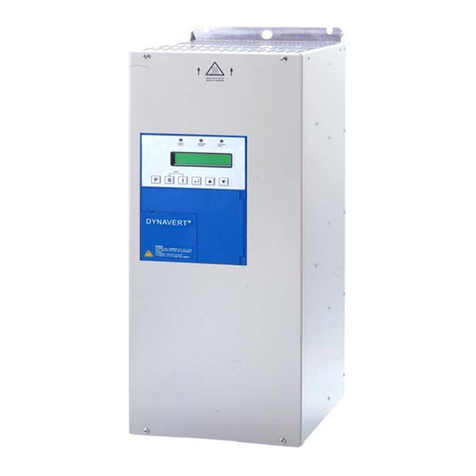
FLENDER LOHER
FLENDER LOHER DYNAVERT L05 Series Commissioning and Maintenance Instructions
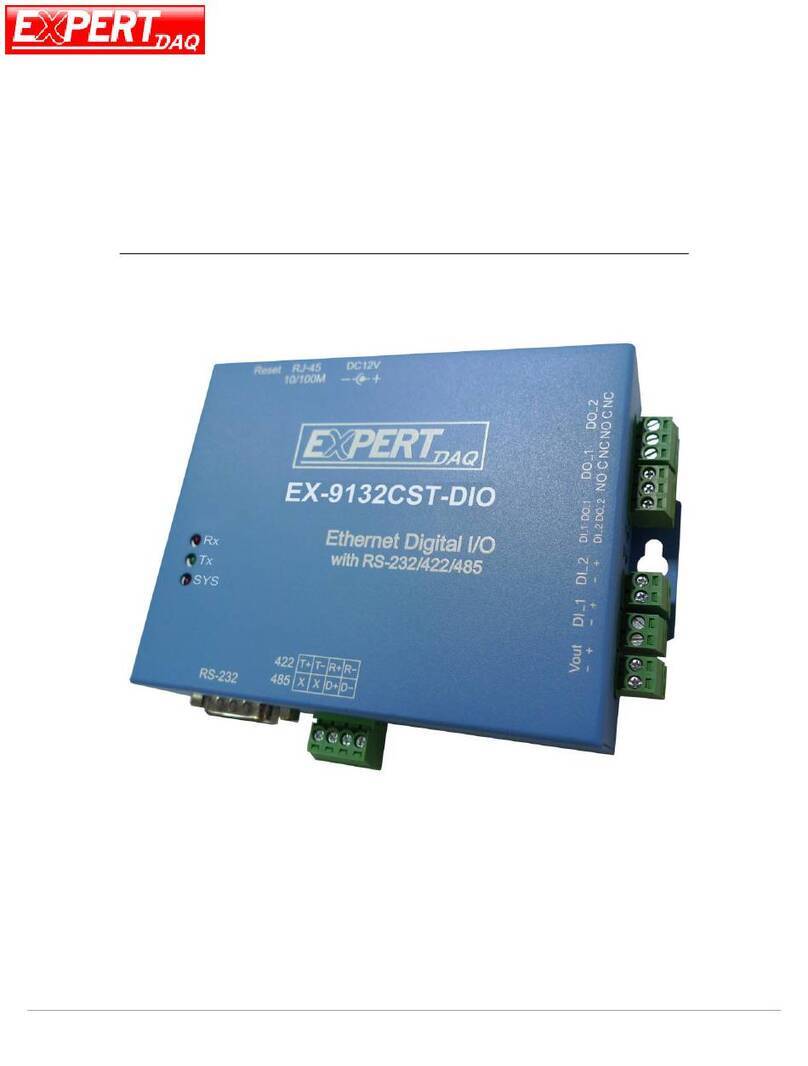
ExpertDAQ
ExpertDAQ EX-9132CST-DIO Operation manual
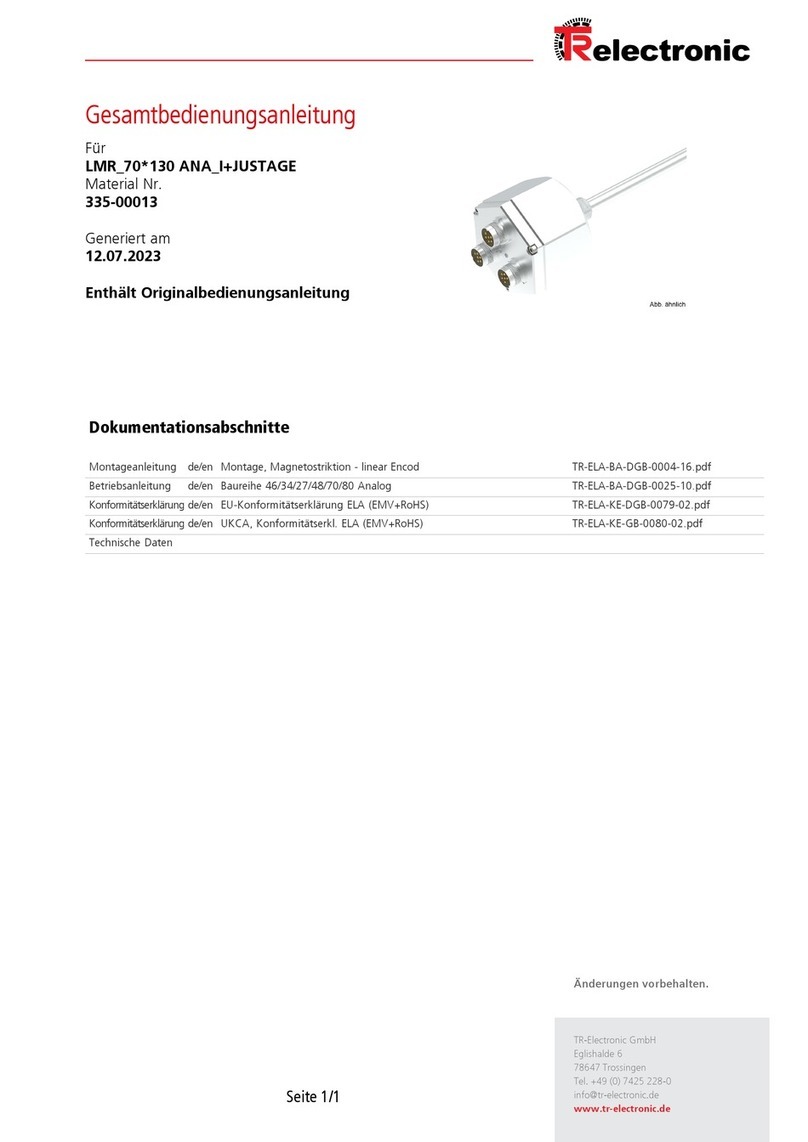
TR-Electronic
TR-Electronic LMR-70-130 ANA-I+JUSTAGE manual
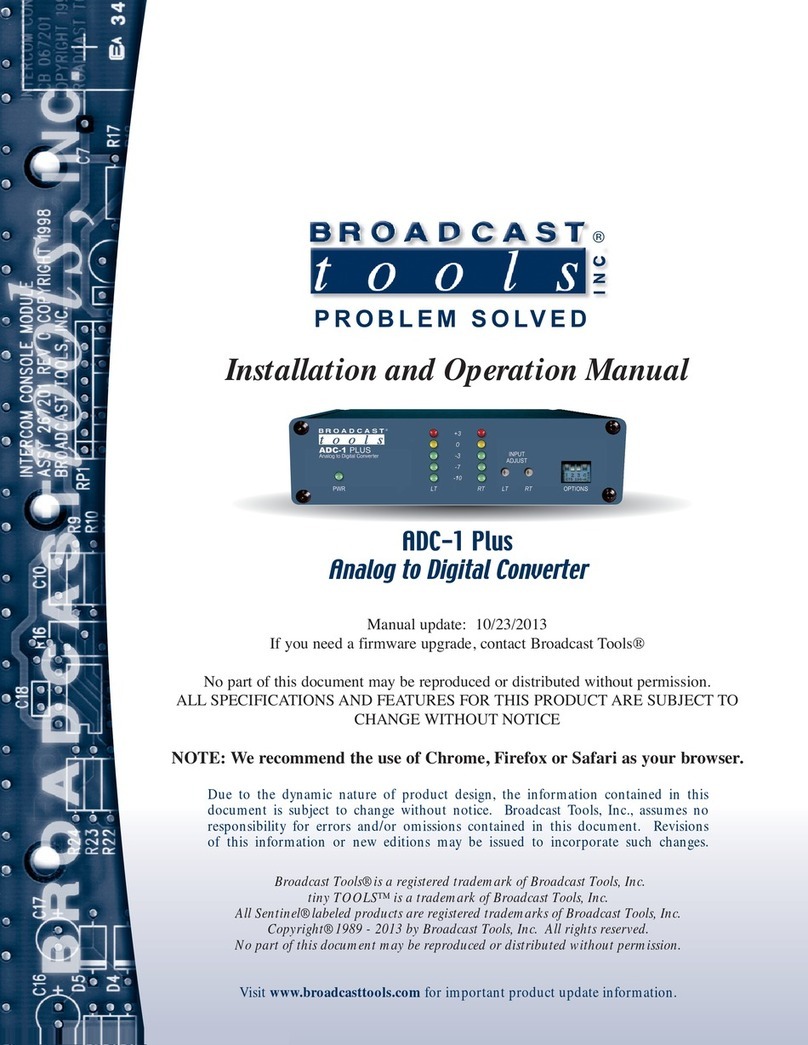
Broadcast Tools
Broadcast Tools ADC-1 Plus Installation and operation manual
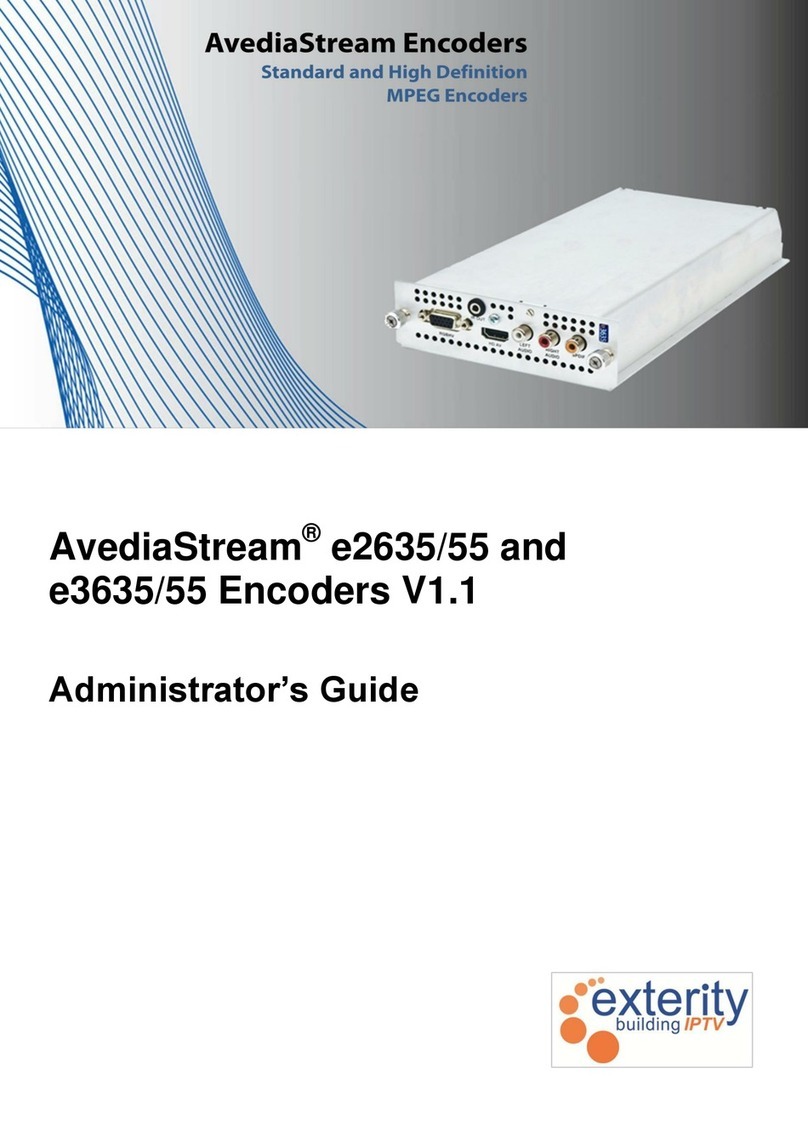
Exterity
Exterity AvediaStream e2535 Administrator's guide
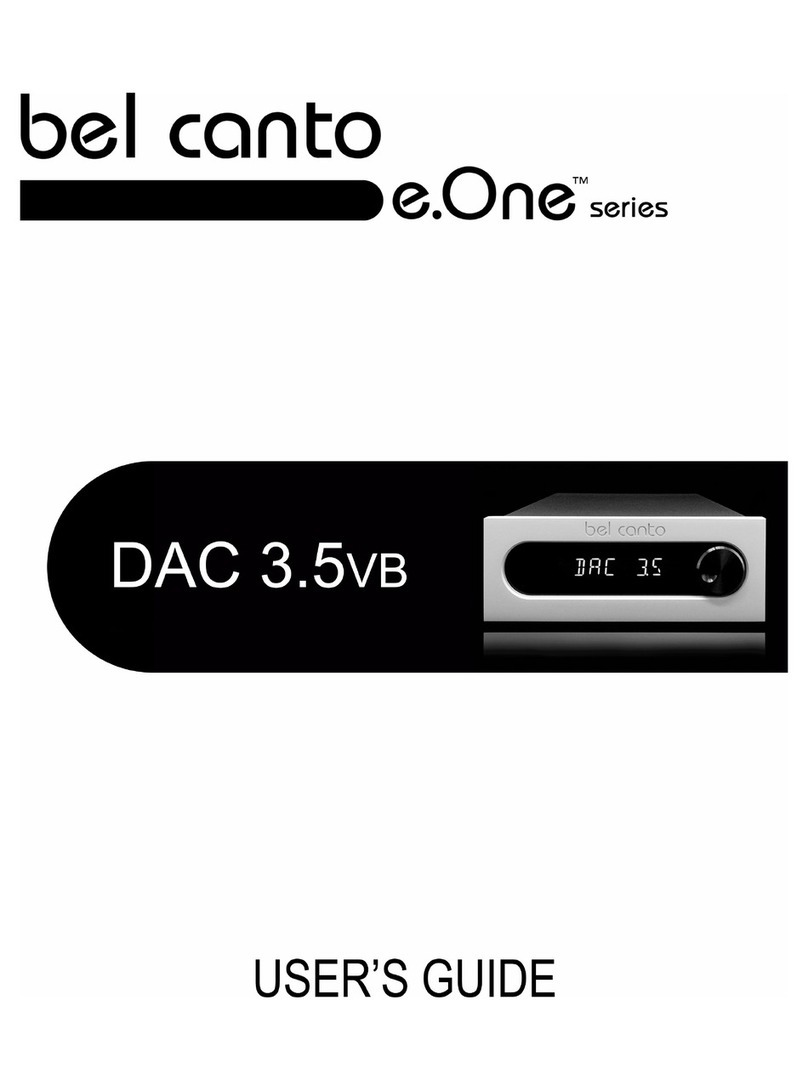
Bel Canto
Bel Canto E.ONE Series DAC 3.5vb user guide

